TAKE THE I65 EXIT TO INDIANAPOLIS
--Feel your feet solid on the earth.
Thich Nhat Hanh
Yuri checks out the Jeep Compass
at Enterprise, giving us a free upgrade
after Pulse breaks into the language.
Meditation on Violence essay breached,
gap in nature. First words from sky
on flight into O'Hare, Karen slides
towards I94 Tollway to Indiana,
black interior in the ride.
Indoor skydiving on the left.
Sandy Hook and grandkids.
90.9 Jazz on NPR Chicago,
12 December 2012 to Orlando,
a Stevie Wonder tune, Creepin'.
Karen's Chief Joseph Vest for the Children,
names sewn in satin lining
from the summer of 2013.
Grandkids modeling, outgrowing,
ghosts in the eyeballs, reading poems
sewn into pockets. Echoing Green
on concrete, wheels of steel
walking us home. Somewhat lost
getting off the plane. Maladjusted,
Martin said. Maladjusted,
and there's a bookstore by the Men's Room.
James Welch and Fools Crew first,
then at the counter, pocket book
fits in the hand, smaller than an IPhone.
Thich Nhat Hanh's How to Walk,
angel beside me. Eat a Chicago Dog,
replace a lost notebook at Target
and trust Karen to find a lane.
Jim Bodeen
22 June--7 July 2016
CRACKER BARREL BREAKFAST
Outside Indianapolis,
Eggs, Grits, Biscuits.
Karen walks us through the tables
taking us to cross-ground grits
where our waitress stands.
How do we eat these,
Jessica?
Karen orders blue berries
and lemon-stuffed French Toast.
Warmed blueberry-lemon syrup.
How did we find you?
An art teacher during the school year
at the elementary school, bi-lingual,
Swedish-English. Saw
Mill Gravy,
or Jam-N-Apple Butter,
she says,
while Karen explores Indiana on the walls.
The menu, too, full of trails,
gives me notebook time,
Thich Nhat Hanh's How to Walk
reminds me of the teacher
who taught me how to enter
a room. Returning from war
before Thich Nhat Hanh found
Plum Village, the drama teacher
showing me balance in opposition,
bending knees and relaxing the elbow.
Don't worry about memorizing any lines,
get this walk down. I open to the page
where the monk walks with Father Berrigan,
remember the tribute Dan Miller
wrote in The Sacred Braid, his description
of Daniel Berrigan's walk, and pause
to recall the peacemaker's passing.
Brother Hanh kept his own pace
with Father Berrigan, and Berrigan
learned to slow down, slowing his walk
even in the city. Just like this, then,
walking into a room, away from war,
walking to Jessica's table,
receiving her instruction eating grits,
sitting at table in the heartland..
Jim Bodeen
22 June-7 July 2016
WITH MY WIFE, RETURNING HOME TO INDIANA,
TO MARY AND ARVIN'S, IN NEW ROSS,
WHERE HER MOTHER'S PEOPLE COME FROM
Natural light in the ancestral home,
hearth house, gathering place,
Mother-step site, archive
and archival, storage vault
of story and photograph,
where Karen came, where she was left
as a child, where she returns to.
I step back and lift the camera
as she walks through the door,
screen down, open generational eye
for the heart embrace, blood relatives,
Aunt Mary, Karen, quilter coming home,
part of the fabric of this light.
Jim Bodeen
June 24--12 July 2016
AT THE DINING ROOM TABLE
DURING THE REUNION DINNER
Oh, someone said,
The light is gone.
We knew the sun
had gone behind
the cloud
Jim Bodeen
25 June 2016
TALKING WITH MAMA
AFTER COMING HOME
My kids are all grown up
I've been back so many times to see you
I don't know how many times
I've walked that cemetery
talking to you.
You're still giving me
what's always been mine,
and sometimes I hear you
when I talk.
I listened so long
and there you were
when I opened my mouth.
Even the cousins feel this.
They've quit looking for you
when they see me.
Looking at me
like I'm not quite real.
Now they say,
Karen's coming back
for the re-union.
The sorrow we carried
for so long, was our way
we kept in touch.
Can you believe that, mama?
Loved so much,
why, we can be anywhere,
out west, or Indiana,
you just can't tell
where one leaves off
and the other begins.
Jim Bodeen
2 July 2016
THERE ARE 43 SPECIES OF FIREFLIES IN INDIANA
--for Brent
Wheat, Journal Review,
Crawfordsville, Indiana, The Indiana State
Legislature,
and Bristol Zoo Big Bugs, UK.
June and firefly season.
The mystery of light
provided by an ordinary beetle.
Current legislation in the pipeline
makes the "Say's Firefly"
State Insect of Indiana--
House Bill 1243
with lots of authors--
taking effect 1 July 2016.
Pyractomena angulata,
congratulations.
Oh, bright spark!
The light in your tail,
this amber light--
refusing to be understood as enzyme
and chemical reaction--
this cold light, efficient
but without much heat,
flashing to attract mates.
Male flying in circles
while females sit
on tall blades of grass,
Flashing with the urgency
of a two-week life span,
Gentle "Big Dipper,"
common one delighting us
in the night sky with bioluminescence,
yellow-green glow
coming from your belly,
first the flash,
followed by a 2-second pause,
flashing upward in a "j" curve
into darkness.
Jim Bodeen
22 June 2016--2 July 2016
THE BLACK WALNUT TREE WAS ALREADY THERE
Arvin walks to the barn
for a spade to dig up Black Walnut seedlings
from the mother tree, mature 52 years ago
when he and Mary moved to these six acres.
Black Walnut, Juglans nigra--
a branch came down last night in the storm--
known for neighborhood debris,
black twigs and car-denting fruit,
exuding juglone from roots, leaves,
and nut husks, a chemical inhibiting
grown in other plants. In Krygyztan,
Juglans regla, the walnut forest
is the garden, nuts are used for money,
but in Arvin's acreage, he shows me
the stump and hammer his father used
to crack this flavor-full tough nut--
I've pulled enough of them
to know what they look like, he says,
The English Walnut is easier to shell.
Compound leaves with 9 to 23 leaflets,
layers to get to--black walnut,
billiard to baseball-sized green orbs--
husks yellow-green to brown to black,
boil black walnut husks in water
for the dye, the shell abrasive,
with grit-like pumice, patterns
in the nut-sell repeated in bark--
Who shells black walnuts? Too
hard! A map of your local squirrels'
activities shows one the connection
between seed and tree. Diamond-shaped
pattern of bark, continues Arvin's lesson.
Jim Bodeen
26 June--12 July 2016
KAREN WALKS THROUGH BROWNSBURG CEMETERY
WITH COUSIN JIM EVERETT
You see things Everett this way.
You mean Everett things.
And that's Junior and Virginia, right?
I thought Sherman's tombstone was black.
That's Sherman.
Oh, here's Aunt Hilda.
We used to have Christmas dinners
Uncle Dan and Aunt Hilda.
There's Sherman,
and Mom and Dad right behind there.
It really is amazing how many relatives
I have right here.
We don't have anybody down here, do we?
Charles A. WWII
Benny G. Waggoner...I'll let you read this.
I don't want to be buried in Indiana.
It's too hot.
You haven't found Uncle Ernie yet.
There are people dying today
that never died before.
I came to Uncle Ernie's funeral.
Snoopy says everybody's going to die someday
and other days they're not.
Junior and Virginia have two stones,
military and civilian.
Now, did he re-marry?
Were they ever formally divorced.
They were re-married
to the same person.
Married twice, but to the same person.
That blue flower pretty in the ditch,
that's chicory.
Jim Bodeen
25 June--2 July, 2016
Brownsburg, Indiana--Yakima, Washington
GIVE REGARD TO THIS BELONGING
The question begs like a child
in the whole big book being
written, and never finished,
never knowing. Arrow
in the heart-target. Point
of departure
and devotion. Devotion
returns one to Karen
and Karen's story.
Do you know it?
Briefly, her birth mother
died when she was one.
Her father's side
were Norwegians
from the West Coast.
Her mother's side
were English
from the Motherland
of Indiana.
The father was never
able at marriage or fatherhood.
What would happen to Karen
when her mother died?
West Coast? Heartland? Who?
She was taken in by her biological
father's brother, her uncle and aunt.
They raised Karen. They took her, too,
to Indiana, to see, to know.
Her seed father
insisted on being called Father, Dad.
When he could no longer manage,
Karen nursed him until he crossed,
and Karen called both Aunt and Uncle
Mom and Dad. She sat with them
at their bedside. During the longtime
of the care-taking, Karen began
the deep excavation of her Mother's
deep roots. Her ancestral story
come alive through peonies
planted graveside at her early departure--
through photos, visits, travel, documents.
This is how Karen began her journey
as the great Mother, Mother Quilter,
which itself a great, long love story.
Karen's great gift to the world,
and mine to witness.
I
have not always
been
up to the task.
Always before us all. To watch. To see.
To be-hold. What a word. Be-hold. From Behold.
To be held.
Be-hold. Biblical be-fore us. For us.
Karen healing the ancestors.
Her biological mother, Dorothy.
Seed father Bert.
Those early poems when I was able.
Dorothy does speak to her daughter.
Karen answers back. The two, talking.
The two trading places. Look and see.
Thoroughly held. Bihaldan.
Keep hold of this.
Karen in the Indiana Motherland--
at 40, 50, 60, 70. Her family
looking on in dis-belief. She looks,
and talks, just like Dorothy.
She is, in fact, a miracle to all.
Imagine that in our living room.
Be cautious and beware.
But back to your question.
Jim Bodeen
3-5 April 2017
THIS HAPPENED WHEN YOUR MOTHER DIED, KAREN
[Karen's mother's death remains a family reference point.]
Karen says, Becky's Mom
and my Mom look so much alike.
When I look at Becky I think
she must be my sister
we look so much alike.
Jim Bodeen
25 June 2016
New Ross, Indiana
SHE WAS TALKING ABOUT THE CARS,
KAREN SAYS, DRIVING US TO NEW ROSS, INDIANA
ON THE MORNING OF THE REUNION
Highway 267 ran by Grandma and Grandpa's
when I was a child, a little two lane road.
I remember Grandma saying,
We just sit here on
the porch
and watch the machines
go by.
Jim Bodeen
THIS NEW NOTEBOOK
Arrive with
every step.
--Thich
Nhat Hanh
After breakfast in the Marriott
near New Ross, these are notes on walking.
Oatmeal with walnuts and raisons.
One Cup Coffee. Each page new
and clean with no frets. Here now
in Karen's country. The notebook
left at home on the coffee table
full of notes from spring and anticipation
worried me yesterday on the plane,
traveling at 35,000 feet and 600 miles per hour.
Things slow down after oatmeal.
Karen goes back to bed
and pulls the covers up to catch up
with Facebook, working with her IPhone.
It's raining and storms threaten.
This is the tornado belt
big winds arriving, too.
If I arrive with each step
then each line on this page
is an arrival point, deliberate
in its way of showing, a revelation
bringing the ancestors up the sidewalk,
Karen becomes more her mother
than her mother, gone 70 years,
she will be greeted like this
by family, commonality in genetic likeness,
as revelatory as day lilies on the roadside,
Karen come home, no words necessary,
none given. Lines on the page as progress.
Karen taking the back road built
around corn fields. Aunt Mary, calls
wondering where we are, Big Raccoon Creek.
Jim Bodeen
23 June 2016
HOW THISTLE CAME INTO MY LIFE
My father used to call them Bull Thistle,
Jim,
come on outside. Other people of course
would cut them down,
but I couldn't do it. What's a weed to
them
isn't a weed to me.
--Arvin Brokaw, Greeting our arrival
in New Ross, Indiana
Returning books to our local branch of the Yakima library
where we live, I make a ritual of passing through the New Books section,
Fiction, Poetry, and Biography, glancing, hardly stopping, without plan or
consciousness. On this day I'm returning books the library has obtained from
interlibrary loan, I've had them nearly a month, and I'm not ready to
return
either of them.
Beginning the circle of my return, empty hands, nothing from
biography or poetry, I begin the walk through the last alphabetical section of
the Fiction, where an undersized, slim and laminated paperback sticks out from
the thick hardback novels: LEO TOLSTOY ~ HADJI MURAT. Never heard of that. It
looks short, I say to myself walking to the checkout stand.
Tolstoy walking through a field, Tolstoy writing in his
diary. A tartar thistle broken by a plow. Richard Pevear, co-translator of
Hadji Murat, with Larissa Volokhonsky, quotes Tolstoy from his Diary: "It
made me think of Hadji Murat. I want to write. It defends its life to the end,
alone in the middle of the whole field, no matter how, it defends it." The
story brings to life the famed Muslim warrior, a Chechen rebel, who fought
fiercely against the Russian Empire, remembered across 45 years, from when the
young Tolstoy had visited his brother serving in Chechnya. It sounds like Thoreau writing about the seed
in the table leg.
Lost books
don't ask for a thing
having found their reader
Broken thistle. Technology. Religion. Hadji Murat has fought
fiercely against the Russians, and after a feud with his commander, he defects
to them, only to be trusted by neither side, risking all to save his family. A
half century later, Tolstoy writes and rewrites the story, his health failing,
staying with the theme, Tolstoy writes the story while writing against fiction
and literary art. A thistle in a ditch bank. Later writers researching the
story reveal that Tolstoy, too, has had his try with the thistle, attempting to
pull it in order to put it in a bouquet of cornflowers. This is when he spies
the thistle crushed by the plow. First of all, this story is history. An
imagined fictionalized account of real struggle, exploring the battle of East
and West.
Hadji Murat is the last thing I read before leaving for
Indiana, and a reunion with my wife's family. Karen and I met in Seattle 52
years ago, in 1964. We were both 19. She lived with her aunt and uncle, Aunt
Alice and Uncle Sig. She called them Mom and Dad. She called Bert, her
father,Dad, also, but she lived with Aunt Alice and Uncle Sig. I couldn't
figure it out. These were the Bensons, the Norwegian side of the family. He was
a fisherman from Alaska. A storyteller.
Karen's biological mother, Dorothy, died when Karen was one
year old. Dorothy was from Indiana. She was an Everett. She was from the
heartland.
After Karen and I were married, in 1968, after the Army and
finishing school, going to work and starting our family, Karen began talking
more and more of Indiana. We went the first time in 1979, driving our family
with three young children in a station wagon. Karen was the miracle presence
from the beginning. Her face reflected the face of her mother Dorothy. Here was
the face of their sister and cousin who was taken from them. Taken by disease,
yes. But taken also by the man from out west, the storyteller, the Norwegian.
Karen was the new face in Shakespeare's sonnets. But more.
Karen was Resurrection itself. This is Baptist country.
I was her husband, yes, but a young man, myself, a storyteller
with Norwegian connections. I would have to be on best behavior, mind my
manners and watch what I said. This is what I've tried to do, not always
successfully, but I always knew Karen was the story. Karen was proof, too--she
looked like her mother. She was memory and family and photographs. She was
here. She was proof and validation of the family story. And this family had
history and documentation.
Roots ran deep and further back than expanding suburbia
eating of the croplands with new houses and shopping malls. Karen, too, was
heartland. She was fire. She re-kindled the story.
I felt this, too, this miracle story, the one difficult to
believe in. I saw it, too, intimately, and not only as an outsider. From here I
came to know Karen's story. Aunt, uncle, mom, dad, Father. Here I would know
something else.
This was 37 years ago, now. This first trip. This return,
always re-newing. Re-union.
The something else was Arvin. Beyond all that was given us,
I came to know, hesitantly and uncertainly, one of the remarkable men of my
life time. This man who loved trees and taught me about fence rows. The man who
looked at fossils with me. The man who outgrew his town and family. Who outgrew
his faith, and said, "But we can't talk about it." The man, who, when
I came through the door 37 years after the first time, said to me, "Jim,
come out with me and look at this thistle. I'm protecting it, it's taller than
we are, it doesn't have its purple flower yet."
Let's look now
Tartar thistle,
what your father calls
Bull thistle
What Tolstoy found
walking fields,
What he couldn't forget
Let's look what we find
rebellious
facing history
Jim Bodeen
15 June--1 July 2016
AFTER PICKING WILD RASPBERRIES
Aunt Mary Ellen takes a pan
and goes through them
one by one, "...there's
a little worm," she says,
"we call them
picnic bugs
because they make
the potato salad crunchy."
Jim Bodeen
22-24 June 2016
OFF BALANCE
Eye-dazed from berry picking
looking at wild raspberries
in my bowl, Beth says
the tiny strawberries
have no flavor at all,
this carpet of fruit
on which I walk.
Jim Bodeen
22 June 2016
AT THE DINNER TABLE ELAINE
MENTIONS
THE IRON LUNG WE SAW AT THE MUSEUM
Mary Ellen says, I took care of those children.
We had iron lung tape on the floor.
'Germs stop here.'
The one in the museum.
We had a room full of iron lungs.
A roomful of children in iron lungs.
The tape?
Touch. How did the children receive touch?
We were more concerned about keeping them alive.
But touch, affection.
Our hands would go in through the port holes.
We were more concerned with keeping them alive.
Jim Bodeen
with Mary Ellen Brokaw
at the family reunion
25 June 2016
New Ross, Indiana
THE MOTORCYCLE WITH THE RED FENDER
AND BLACK SADDLE BAGS MADE OF FLANNEL
Before the
AIDS Quilt at Navy Pier, Chicago
They photographed quilts they had brought
to share. They had laid them out on the floor
in the living room. And in the Indiana Museum,
they had done the same. The
Vine Quilt
with its colorful patchwork
leaves.
And the Rainbow Quilt hung
in the modern art gallery.
Marie Webster's linen and
cotton appliquéd
on cotton from 1920. The
quilter
who wrote the first history
of quilting.
Then the sky fell. Quilting
would no longer
be on your grandmother's
bed.
Donna Stader laid a blue
cotton slash
across the top and it became
the falling sky.
Family history would never
be the same.
Silent with each other with
time,
they walked the Pier in Chicago
without purpose, finding
themselves
face to face with the AIDS
quilt
on Pride Day in all of
America's
major cities. The wall-sized
block of Sotomayor, Front
page
AIDS numbers unfound
by grandma and grandpa
in the newspaper, Squares
of the fallen beneath the
cartoon.
Never again. Daniel
1958-1992.
Act up Chicago. Cure the
System,
Fight for the living,
bordering
the waterfront: We're all
living with AIDS.
And the young woman
appearing
before in shiny satin
rainbow cape,
on this side of the rail,
before the basketball jersey
of Stephen J. Gibson.
She turns towards me,
for the camera, in her
rainbow tshirt,
smiling, holding up the
cape,
fresh from the parade.
The AIDS Memorial Quilt
photos by Lisa Howe-Ebright
from the 1988 installation
intersperse themselves
between quilt blocks. We see
the first quilt blocks
on the pier floor, with the
first viewers
walking in witness.
My friends post images of
the Parade
from San Francisco, and
Seattle.
Happy Pride Day. Facebook.
Worth sharing again.
Minneapolis' Loring Park.
Pridefest.
.45 records cut into black circles
with red and blue labels, quilt square
originals, with the hand-written notes
of personal loss. Hand writing
forever witnessing. The word,
Remember, over and over,
remembering in new ways:
We remember all those lost to AIDS
who had no one to memorialize them.
The names over and over.
T. Charles Steward, Michael Bennett,
names with images of vocation,
Chuck Lund in his chef hat,
the restaurant where he did his cooking.
The dates of shortened lives:
8/30/60-11/4/94. Marc Sawyer.
A gold ring and a red ribbon.
1953-1992.
You don't have to be infected
to be affected. The colors
of the rainbow in the letters.
Quilt patches as tombstones.
So many images of music.
So many musicians.
Not just sons and daughters,
your grandpa, too.
Jim Bodeen
June 2016
Chicago
BETWEEN PLACES WALK
AFTER PHOTOGRAPHING QUILTS
AT THE INDIANA REUNION
Cajun prawns and lemonade
walking Navy Pier in Chicago.
An afternoon away from the car.
The woman saw that book in my hand.
Walk without talking?
I'd never get
anywhere!
Each stop with the eye
is another step. I'm looking
into the AIDS quilt, hung on the pier
in 15 blocks crafted from 48,000
individual panels, each remembering
someone who has died of AIDS--
largest community art project
in the world. Each cloth panel a thread.
Here's a house with an open window,
curtains lifted by a quilter's breeze.
The title of the book that stopped
that woman: How to Walk.
I'm supposed to be paying attention.
I got here by walking with the quilter.
Jim Bodeen
26 June 2016
Chicago, Il
CHICAGO DOG
Walk off the plane at Solstice
without lifting one's foot. Beached,
and no sand between the toes.
Cut off from ancestors
and the full moon in the driveway.
Jim Bodeen
































































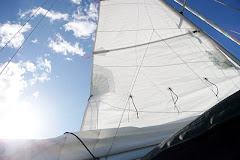

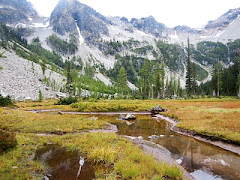


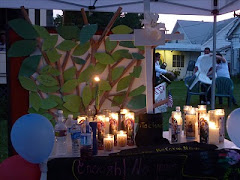






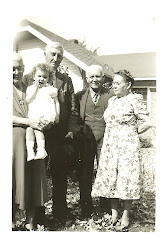









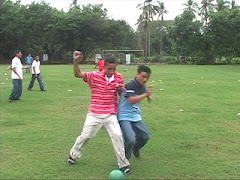
No comments:
Post a Comment